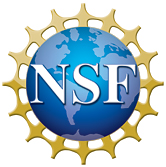Using problem-solving as a context for our examination of explanatory arguments generated by prospective teachers, we examined explanations prospective teachers constructed to support their own problem solutions, and explanations they provided in support of their critiques of student-generated explanations. We also examined features of explanations on which PSTs drew in their critiques of mathematical explanations of students. Our results show the importance of helping prospective teachers develop competencies in constructing and critiquing mathematical explanations concurrently. The results also suggest that prospective teachers might benefit from activities that help them recognize different features of student-generated explanations by explicitly directing their attention to the specific aspects of explanations (e.g., justifications, generality, foundations—which may also include any assumptions that underlie the solution to the problem). Engaging prospective teachers in analyzing and critiquing student-generated explanations gives them tools to self-critique of explanations they generate.
Magiera, M. T. & Zambak, V. S. (2020). Exploring prospective teachers’ ability to generate and analyze evidence-based explanatory arguments. International Journal of Research in Education and Science (IJRES), 6(2), 327-346.
We report on a teaching experiment with prospective teachers intended to support their understanding of the validity of mathematical arguments, and their ability to formulate mathematical arguments by conducting case analysis. We used Toulmin’s framework and engaged prospective teachers in collective argumentation in the context of solving crypto-arithmetic problems about a multi-digit addition algorithm. The problems facilitated reasoning about cases. We show the evolution of prospective teachers’ reasoning skills over time. A significant proportion of prospective teachers moved away from providing unsupported claims, towards constructing all-encompassing deductive-like arguments with clearly stated claims, supporting evidence, and reasons. We suggest a plausible sequence of learning activities for mathematics teacher educators to consider in an effort to strengthen prospective teachers’ argumentation skills. The goal is to support their ability to reason about and analyze cases while solving problems that lend themselves to drawing logical inferences with strategic approaches.
Zambak, V. S., & Magiera, M. T. (In press). Supporting grades 1-8 PSTs’ argumentation skills: Constructing mathematical arguments in situations that facilitate analyzing cases. International Journal of Mathematical Education in Science and Technology. DOI 10.1080/0020739X.2020.1762938
Our work shows that by carefully designing learning environments for prospective teachers, they develop positive dispositions and views on argumentation in elementary and middle school mathematics. We document that prospective teachers value argumentation primarily as a teaching-learning practice, not as a disciplinary practice of doing mathematics. This result is significant for two reasons. Prospective K-8 teachers who value argumentation as a teaching-learning practice are more likely to facilitate argumentation in their classrooms. On the other hand, prospective teachers who do not see argumentation as a way of doingmathematics might limit opportunities for their students to engage in argumentation as an inquiry into the truth of mathematical claims. Our result provides insights into the design of interventions focused on supporting teacher candidates in developing this latter, complementary vision of argumentation in school mathematics.
Park, H., & Magiera, M. T. (2019). Pre-service teachers’ conceptions of mathematical argumentation. In S. Otten, A. Candela, Z. deAraujo, C. Haines, & C. Munter (Eds.). Proceedings of the forty-first annual meeting of the North American Chapter of the International Group for the Psychology of Mathematics Education (pp. 1264-1268). St Louis, MO: University of Missouri.
We explored three teaching competencies: Prospective teachers’ professional noticing of student mathematical reasoning and strategies, their ability to assess the validity of student reasoning and strategies, and their ability to select student strategy for class discussion to engage students in argumentation. Our results reveal that PSTs with a strong awareness of mathematically significant aspects of student reasoning and strategies are better positioned to assess the validity of student reasoning and strategies. PSTs with higher strategy evaluation skills are also more likely to choose the strategy to engage students in a discussion focused on justification or to advance students’ conceptual understanding, compared to PSTs with low strategy evaluation skills
Zambak, V. S., & Magiera, M. T. (2018). Pre-service K-8 teachers’ professional noticing and strategy evaluation skills: An exploratory study. EURASIA Journal of Mathematics, Science and Technology Education, 14(11), 1-19. DOI: https://doi.org/10.29333/ejmste/92021

























